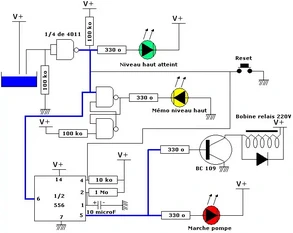Level detection
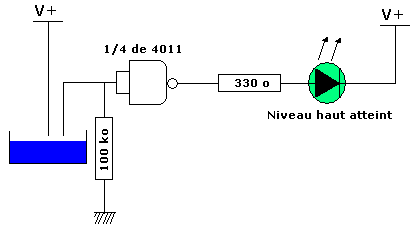
I've opted for an arch-known principle, the high impedance of c-mos circuits, starting from that it's very simple to make a liquid detector with a simple nand gate (¼ of 4011).
If the water level rises, it brings a 1 to the input of the nand gate, which is normally pulled to 0 by a 100 kΩ resistor, so we have a 0 at the output of the gate, which is mounted as an inverter.
The timer
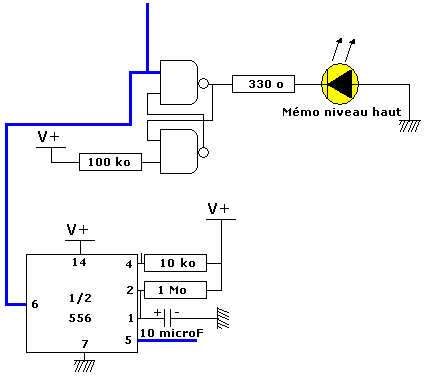
This signal is sent to the timer, but also to two other nand gates mounted as RS flip-flops to memorize the fact that the high liquid level has been reached. This lights an LED and is useful for checking operation during an absence. The RS rocker is fitted with a reset button to erase the memorized information and therefore switch off the LED.
No particular finesse, I used a classic archi 555, well almost, as I only had a 556 left in my bottom drawer, that's what I used (remember 556 = 2x555). Configured with a 1MΩ resistor and a 10µF capacitor, the time constant is 20 seconds.
Power control
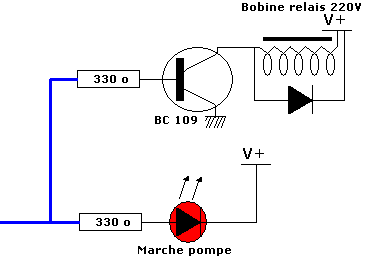
At the output of the 556, the output power is insufficient to drive a relay, so I used a classic transistor, here a BC 109, to drive the coil of a recovery relay. The transistor is protected from the relay coil by a 1N4148 diode.
It's the relay that will control the pump, giving it or not 220V for 20 seconds, each time a high water level is detected.
Power supply
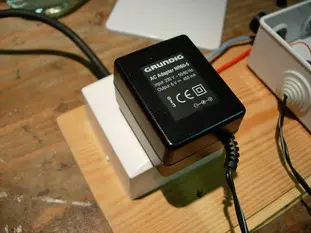
For this purpose, I recycled an old cell phone power supply, of which there are often several copies lying around in a box.
Final diagram
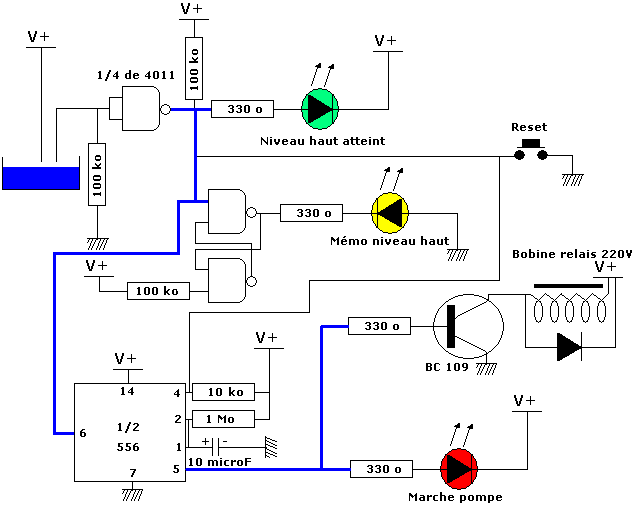
Conclusion
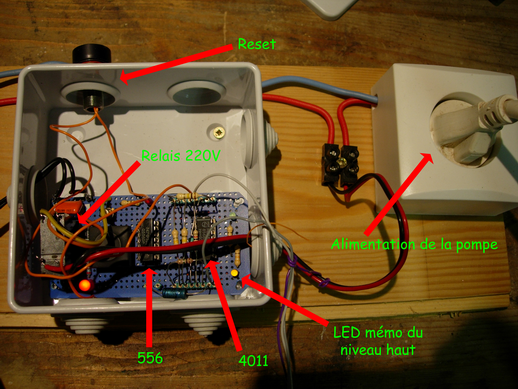
As you may have noticed, I use a lot of bottom-of-the-drawer or salvaged components, which makes for a really inexpensive assembly, in the region of 3 or 4 euros, but which has been working very well since early September 2009.
